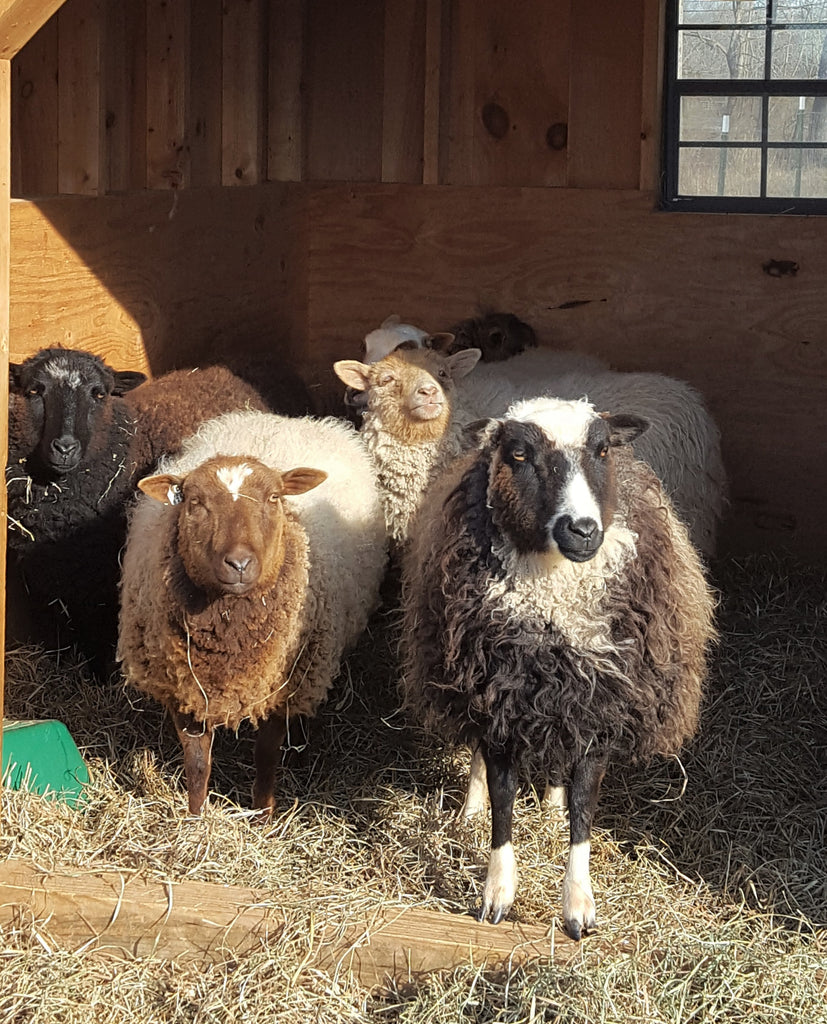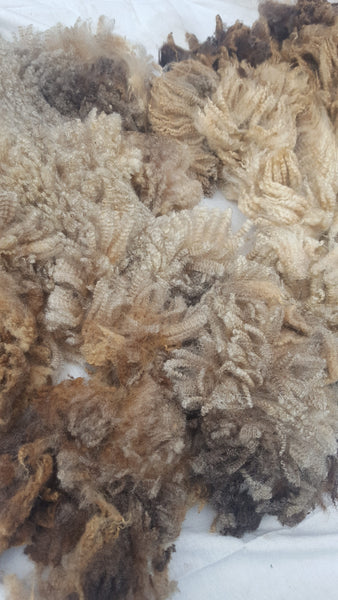
I love shearing day. It’s like harvest time but I don’t have to do any of the heavy lifting! My Shetlands are prodigious fleece growers, and since winters are short and relatively mild here, I’ve been shearing everyone twice a year. Timing is always tricky for fall shearing. In a perfect shepherding world, the sheep would have a full coat when it’s just cool enough to kill off the flies and ticks, but not really cold for another week or two. It would rain two days before the shearing, followed by 2 dry days, so that the sheep are washed but dry for the shearer. And of course, all those factors would coordinate with your schedule and the shearer’s. It would certainly be nice if everything fell into place so neatly, but let’s be honest. Sometimes, shearing just happens when shearing happens.
Finding a shearer is not unlike finding the right stylist to cut your own hair, I suppose. You look for someone who shares your approach of gentle handling, doesn’t cost too much, and is quick and efficient. I’m on my 3rd shearer (the first was very experienced but a little brusque, and the second was wonderful but recently quit the profession). This one was the shearing demonstrator at the Garden State Sheep & Fiber Festival, and although I didn’t see him in action, people said nice things about him. He charged $22/sheep, which is on the high side, but he didn’t charge a separate travel fee.
Well before the shearer arrives, I put all the sheep in the small enclosure. I grew up reading those James Herriot books, and if nothing else, I learned to always wrangle my sheep before the shearer/vet/buyer comes. It’s not just good manners--it’s more that I really don’t want to put on a show chasing after my sheep in front of an audience! And as always when I’m expecting someone who’s been around other sheep, I set up my boot-washing station: scrub brush, bleach spray, and the hose next to a chair. Where he’ll be shearing, I hook up the extension cord and gather the dewormer, tarp, broom, and plastic bags.

The shearer arrived with a crew: his younger sister and her friend. Both girls were active in the local 4H sheep club, and were interested in learning how to shear. Being relatively new to the farm life myself, it always surprises me when children are conversant in topics such as split nipples or deworming schedules; it’s like visiting a foreign country and hearing kids chat away in a language that took me 8 years to learn.
I warned the shearer that my sheep, on top of being fiesty Shetlands, were *spoiled* feisty Shetlands, and not shy about expressing their strong opinions. I explained that while I would like to have a cleanly sheared fleece with minimal second cuts, my first priority was for him to not cut my sheep. I never want cuts on my sheep, but particularly now when there are still lots of flies. I would much rather deal with second cuts than open wounds that are just invitations for flystrike.
I warned the shearer that my sheep, on top of being fiesty Shetlands, were *spoiled* feisty Shetlands, and not shy about expressing their strong opinions. I explained that while I would like to have a cleanly sheared fleece with minimal second cuts, my first priority was for him to not cut my sheep. I never want cuts on my sheep, but particularly now when there are still lots of flies. I would much rather deal with second cuts than open wounds that are just invitations for flystrike.
We nabbed Roobie first purely because she is the worst. She’s the wiliest, and not the sheep you want to do last when you’re tired and the blades are dull. She struggled and flopped around like the drama queen that she is, but to the shearer’s credit, he never lost patience with her, and even gave her time to settle down. It was a very tense wrestling match, and there were moments when I wondered if opposable thumbs and an electric razor were truly a match for four sharp hooves and one rock-hard sheep skull. Eventually she was sheared, had her hooves trimmed, and got her squirt of dewormer.

After each sheep was sheared, I let her into the lower field, which they haven’t been in since the spring. They still squabble horribly after they’ve been sheared, because each one is convinced that all her old friends have been replaced by totally new sheep. Being in a new field is a little bit of a distraction, and since the lower field is overgrown with scrubby brush, it’s harder for them to do their head-butting. They resume their cordial relations in a day or two, but it’s always hard to watch.

Skirting
I’ll be the first to admit (and I’m sure the mill will readily second) that I am not the most meticulous skirter. My fleeces tend to be in shreds, instead of a neatly rolled package, because my sheep flail about during shearing. My fleeces are sorted by color, so each color run will have parts of different fleeces. What I do skirt is the poopy bits, short bits, second cuts, and obvious veggie matter. When I have the fleece on the skirting table, I pull off a manageable chunk, shake off some second cuts and hay bits, and lay it down cut-end up. This lets more hay bits fall through the skirting table and I can remove the second cuts. Then I flip it over, and remove the burrs and stalks of hay from the tips. Judging by the quality of yarn the mill spins with my fleeces, I’d say that my method is reasonably effective.


Comments on post (1)
engetly says:
cilais and priligy[/url]
Leave a comment